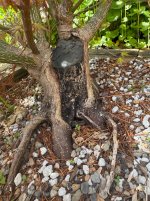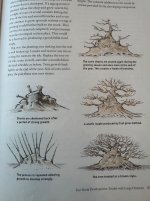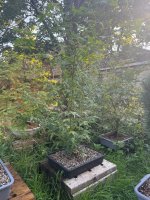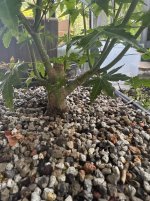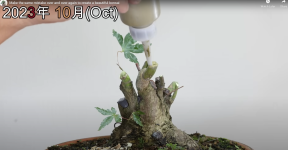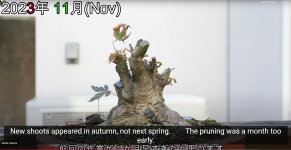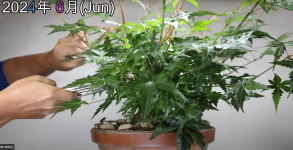One of the maple trunk formation techniques discussed by Merriggioli is the “might trunk”. I’ve attached the first page of the section of his book that discusses this technique. It involves making a low angled cut “down almost to the level of the foot”. I am not sure exactly how this is intended to work as the cut is so low that total dieback is expected by me (there’s nothing feeding the tree on one side). That has also been my experience in trying this technique (see attached pic). Any guidance on how to perform this type of chop without loss of one side of the tree is greatly appreciated. If I chop higher (as he alternatively suggests) I do not get buds low enough to perform this cut either.
So how does one grow a base that looks like a potato with nebari?
So how does one grow a base that looks like a potato with nebari?


